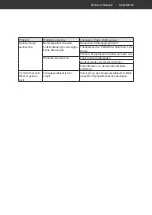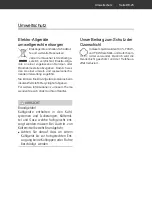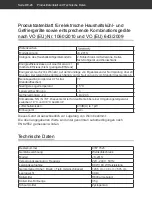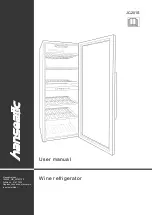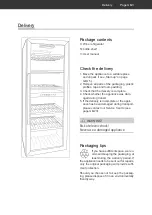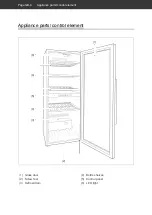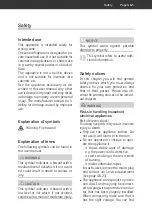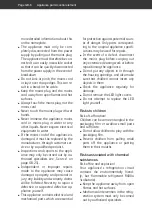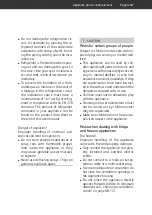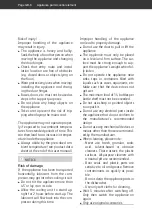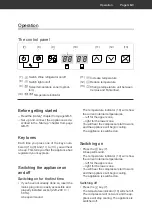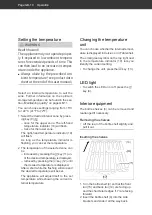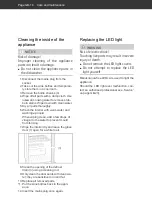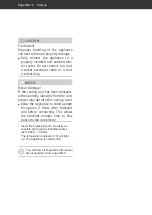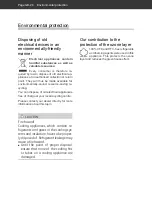
Storing bottles
Page GB-11
WARNING
Danger of explosion!
Improper handling of the appliance
can lead to explosions.
■
Do not store explosive substances or
spray cans with fl ammable propel-
lants inside the appliance, as they
may cause ignitable gas-air mixtures
to explode.
Filling the appliance
• Lay bottles in the slots between the wood-
en rails on the bottle shelves (6) and (4).
The lock will face forward in the direction
of the glass door (1).
• Make sure that the bottles do not directly
touch the interior walls of appliance or the
glass door.
• Remove the packaging (e.g. cardboard)
before placing items in the appliance.
• Systematically fill the appliance so the
wine you want is easy to reach so that
you do not have to move the wine bottles
around a lot.
• Only store strong alcohol standing upright
and closed tightly.
• Make sure that the device is at least 70%
filled in order to counteract fluctuations in
temperature.
Maximum storage capacity
NOTICE
Risk of damage!
Damage may be caused to the appli-
ance by placing too much weight on
the shelves.
■
Do not exceed the maximum load of
14 bottles per shelf.
The appliance is designed to only hold a cer-
tain number of bottles, the so-called nominal
capacity.
The nominal capacity indicates how many
standard 0.75 litre bottles you can store in
the appliance. You will find information about
the ‘Nominal capacity’ on the
product data
sheet at the end of this user manual
.
• Abide by the nominal capacity.
Maintaining quality
Storage temperature
The optimum storage temperature varies de-
pending on the type of wine, due to the fact
that wines have different shelf lives and age
differently.
Wine
Storage temperature
Semi-sparkling
wine
+6 °C to +10 °C
Sparkling wine
+10 °C
White wine
+10 °C to +12 °C
Red wine
+12 °C to +14 °C
Rosé wine
+12 °C to +16 °C
• Avoid strong and frequent variations in
temperature.
Storing bottles
Summary of Contents for JC-201S
Page 52: ......

